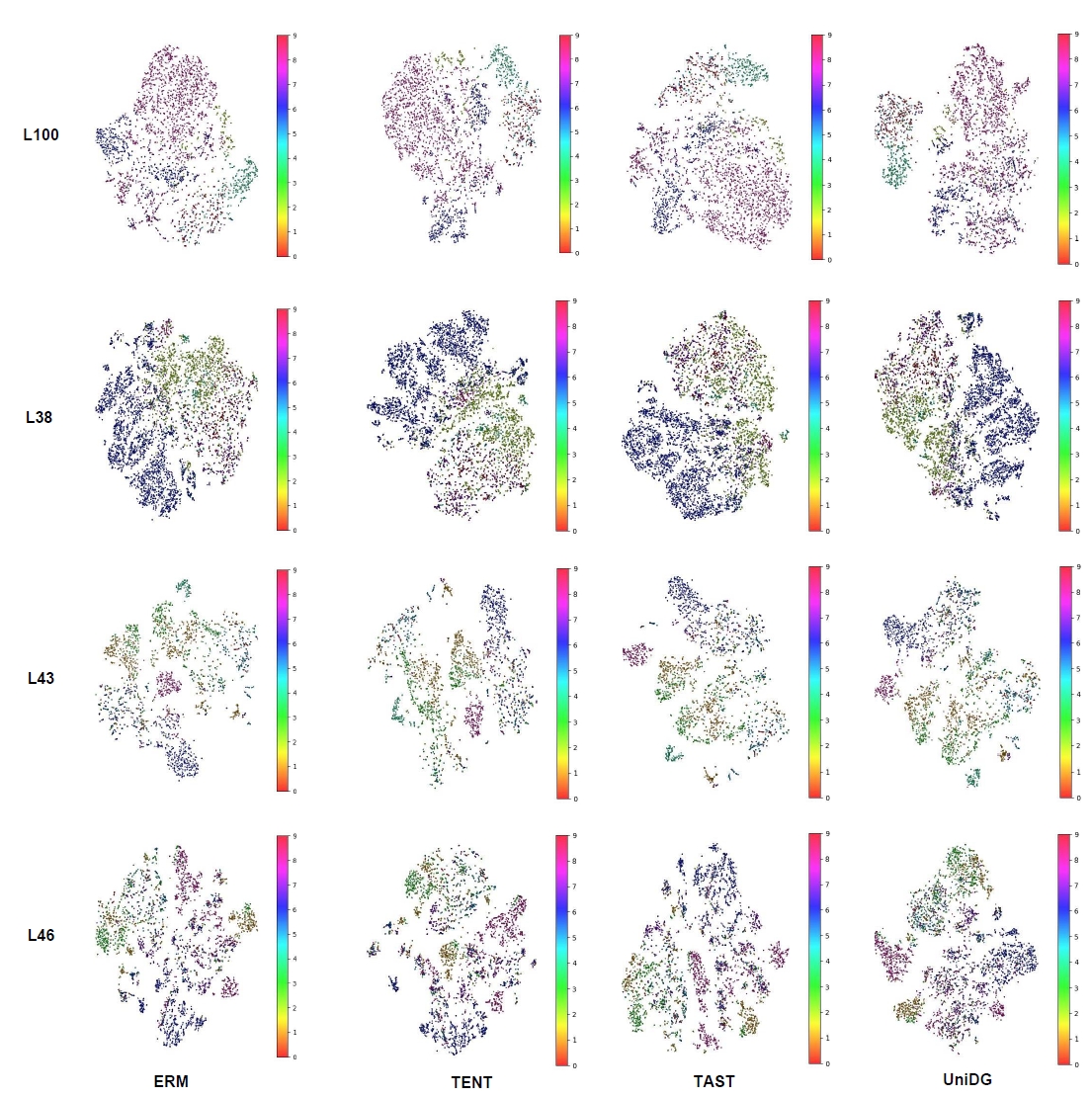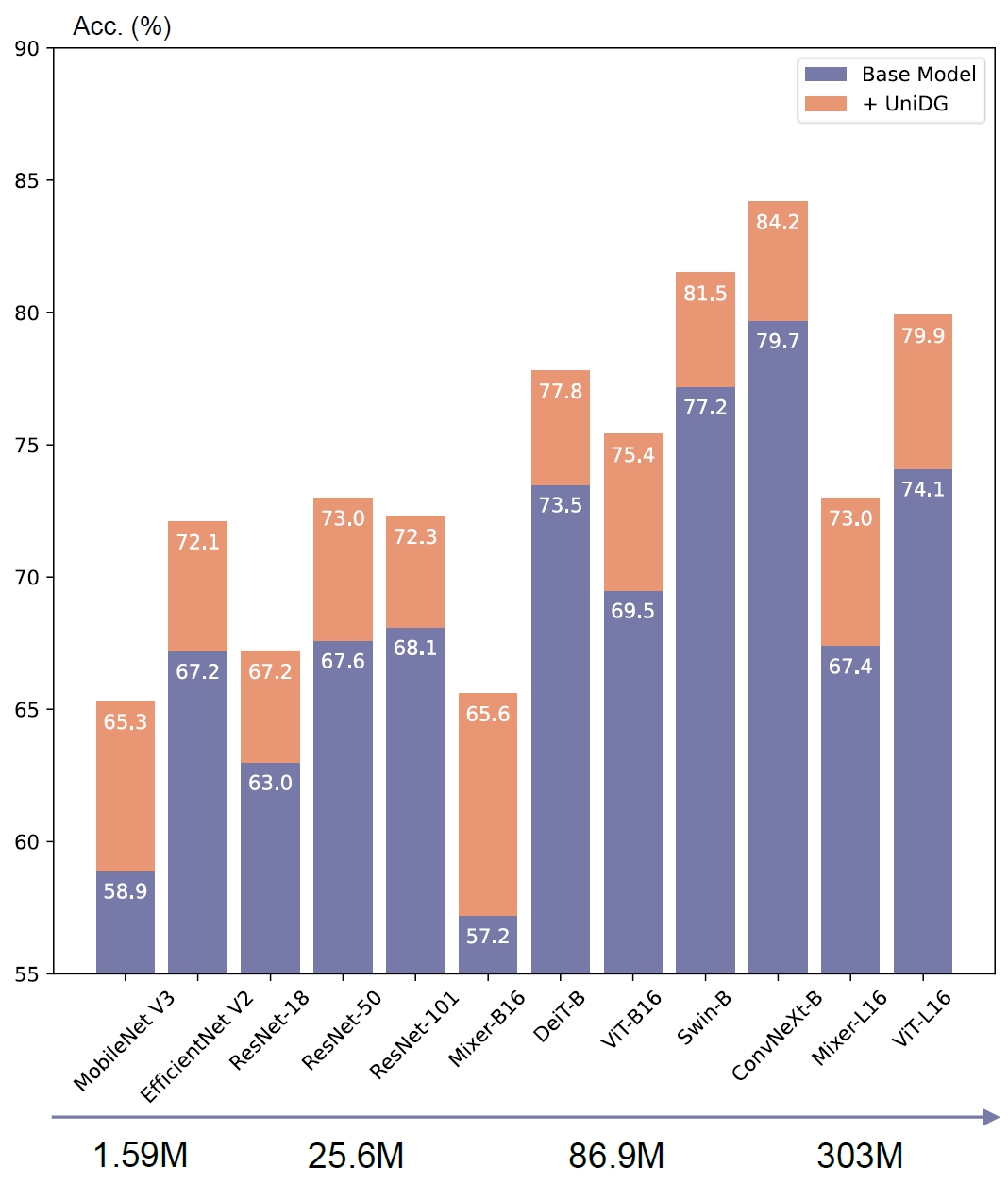We conduct experiments on with DomainBed benchmark on PACS, VLCS,
OfficeHome, TerraIncognita, and DomainNet datasets.
We evaluate UniDG by taking 3 parallel trials with random seeds to calculate means
and standard errors of classification accuracy (%) on 5 datasets.
UniDG prominently achieves a brilliant performance on Domain generalization tasks. Table 1 shows
the performances of the existing advanced approaches for DG tasks using different pre-training
methods. Impressively, with only ImageNet pre-training, UniDG outperforms the CAR-FT model with CLIP
pre-training by 1.1% in the average accuracy (79.6% vs. 78.5%). On the terrain data set with complex
domain shift, the accuracy of UniDG reached 62.4%, outperforming CAR-FT by 0.5%.

UniDG remarkably outperforms all existing test-time methods including the state-of-the-art method,
TAST (Jang & Chung, 2023). Specifically, as shown in Table 2, we choose ResNet-18 and ResNet-
50 as the backbone and average accuracy as the metric to evaluate several test-time methods. UniDG
achieves an average accuracy of 67.2% with ResNet-18 on VLCS, PACS, OfficeHome, and TerraInc datasets.

UniDG remarkably outperforms all existing test-time methods including the state-of-the-art method,
TAST (Jang & Chung, 2023). Specifically, as shown in Table 2, we choose ResNet-18 and ResNet-
50 as the backbone and average accuracy as the metric to evaluate several test-time methods. UniDG
achieves an average accuracy of 67.2% with ResNet-18 on VLCS, PACS, OfficeHome, and TerraInc datasets.

Accuracy accumulation curves on VLCS. UniDG outperforms the base ERM model by about 5% in accuracy. Note we randomly select 10 different trial seeds for better comparison.








